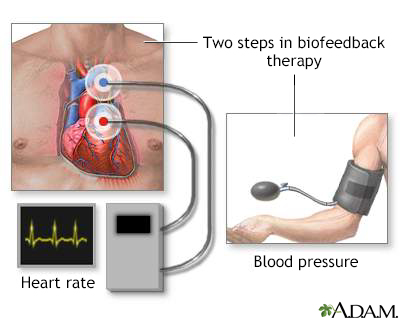Utilizing the Power of Bio-Feedback to Transform Persistent Pain Control and Improve Standard of Living
Utilizing the Power of Bio-Feedback to Transform Persistent Pain Control and Improve Standard of Living
Blog Article
Persistent pain is a syndrome that impacts countless of people across the world. It can be caused by multiple elements, including traumas, illnesses, or even anxiety. For many patients, managing chronic pain can be a constant struggle that affects their standard of life. Traditional treatments often include drugs, physical therapy, and occasionally surgery. However, these approaches do not always provide the relief that individuals desire. Lately, biofeedback has emerged as a potential alternative for managing chronic pain and improving overall well-being.
Biofeedback is a method that teaches patients how to control specific bodily functions by utilizing indicators from their own physiology. This method involves employing sensors that monitor physiological responses such as heart rate, muscle tension, and skin temperature. By providing immediate feedback, patients can discover to identify their body's responses to pain and stress. This awareness allows them to formulate strategies to manage their pain more efficiently. For instance, if a person notices that their muscle tension rises when they are in pain, they can utilize relaxation techniques to help reduce that tension.
One of the primary benefits of biofeedback is that it empowers patients to take an active role in their pain management. Instead of relying solely on drugs or treatments from medical providers, patients can gain to comprehend and regulate their own physiology. This feeling of control can lead to increased confidence and a more positive outlook on life. Many patients report feeling more in charge of their pain and less like victims of their syndrome. This shift in mindset can substantially improve their standard of life.
Studies has demonstrated that biofeedback can be beneficial in alleviating chronic pain indicators. Research suggest that patients who use biofeedback methods often experience less pain and improved physical ability. Additionally, biofeedback can help lessen anxiety and stress, which are frequent concerns for those dealing with chronic pain. By tackling both the physical and psychological aspects of pain, biofeedback provides a comprehensive approach to pain management. This comprehensive method can lead to better outcomes for patients, allowing them to engage more fully in their daily activities.
In summary, biofeedback is a valuable tool for transforming chronic pain more tips here management. By teaching individuals to understand and regulate their physiological reactions, biofeedback enables individuals to take control of their pain. This method not only helps reduce pain but also enhances overall quality of life. As more people seek options to conventional pain management methods, biofeedback emerges as a promising solution. With continued research and recognition, biofeedback could turn into an integral part of chronic pain therapy, helping patients lead healthier, more satisfying lives.